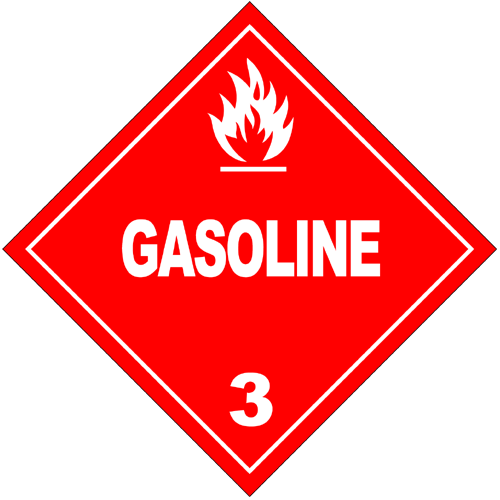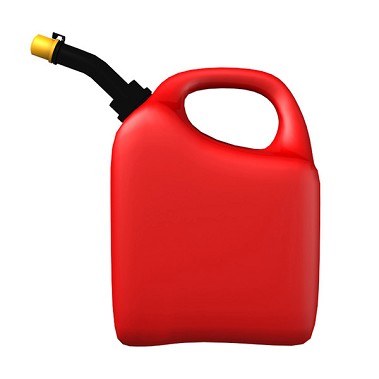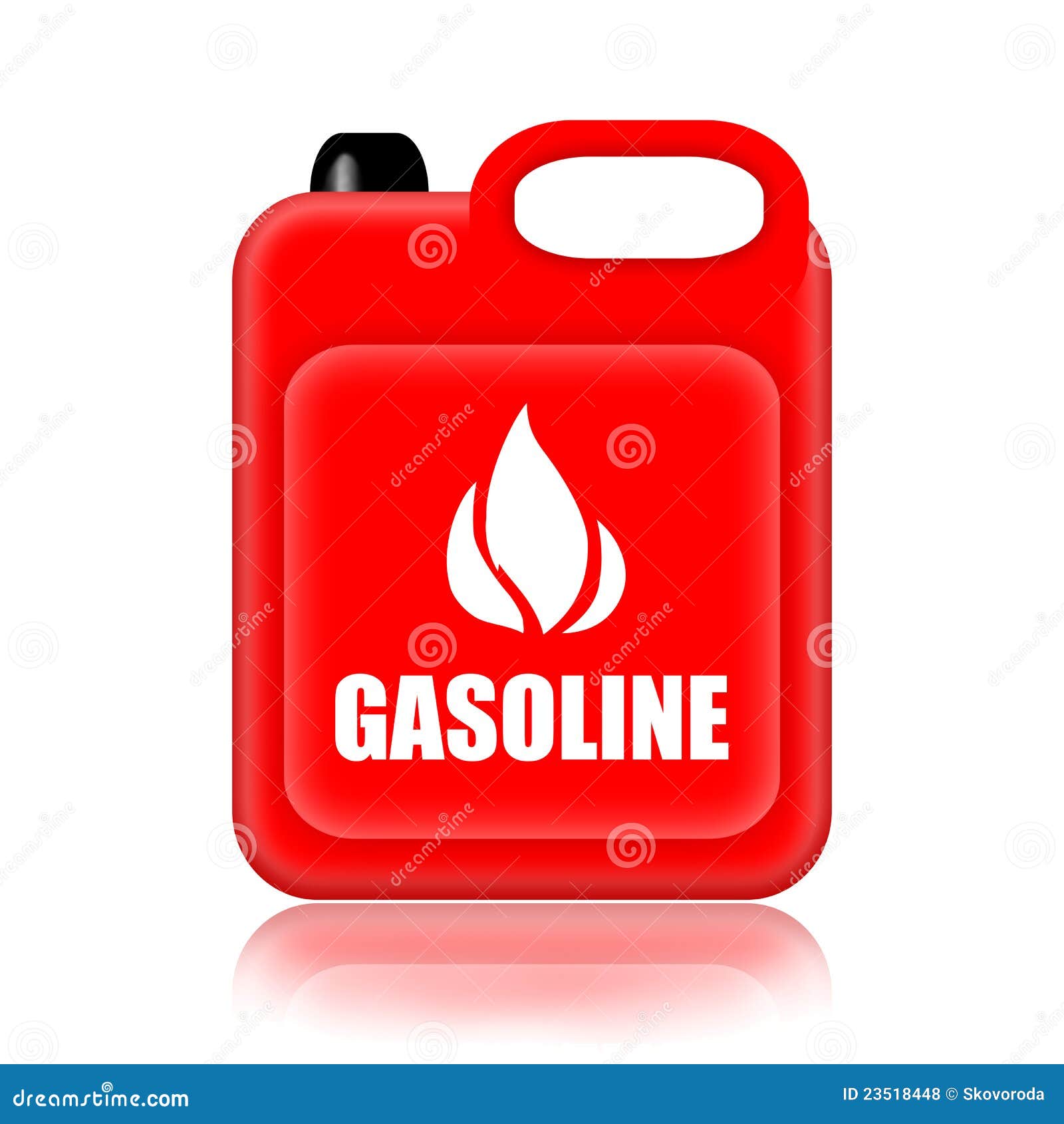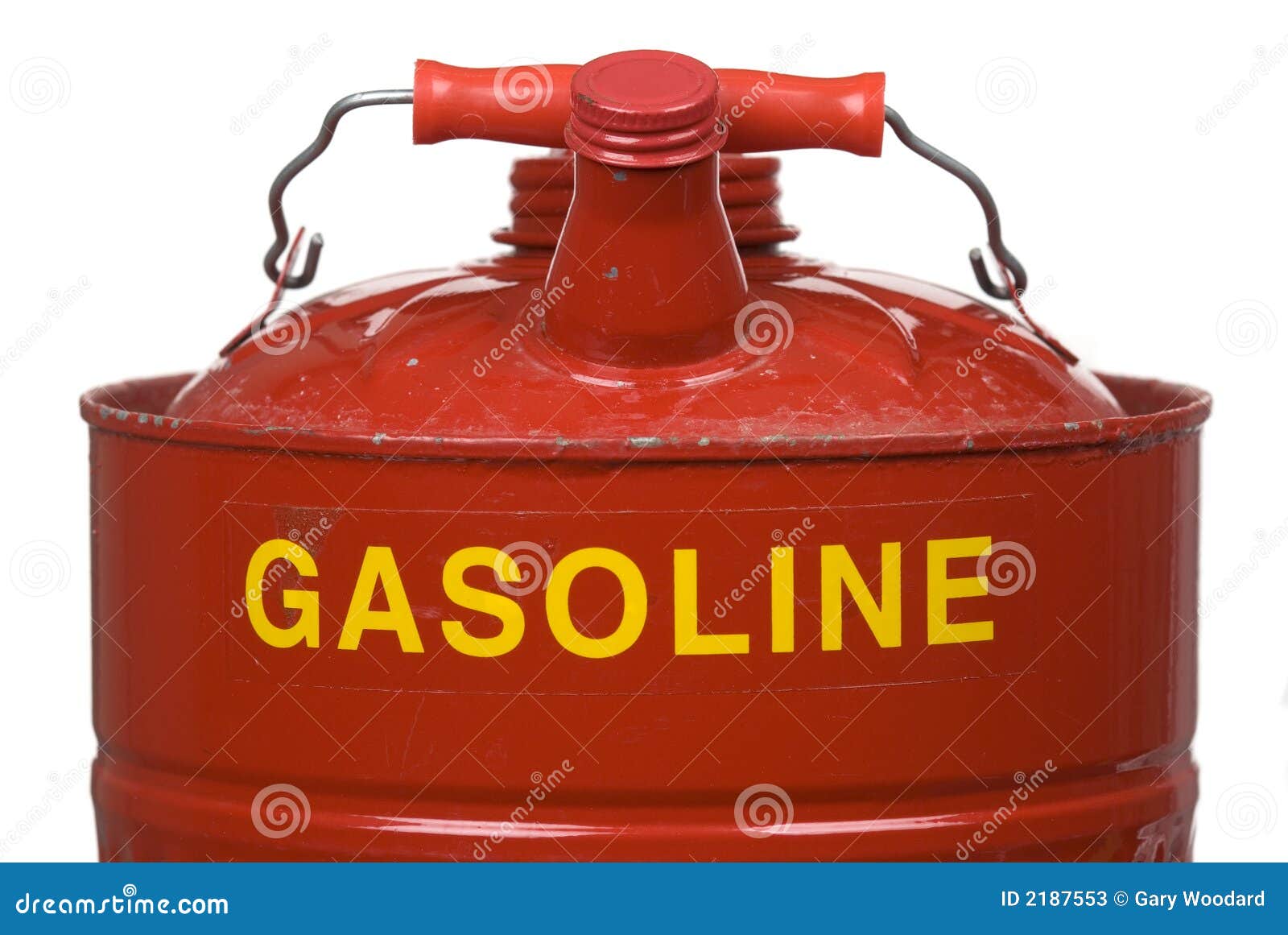Gasoline
Gasoline, petrol, carburettor fuel, fuel ( colloquial)
Fossil, some biogenic
Gasoline, additives, bio -ethanol admixture
8006-61-9
About 0.53 mm ² / s ( 20 ° C)
From 0.720 to 0.775 kg / l ( 15 ° C)
From 11.1 to 11.6 kWh / kg ( 40.1 to 41.8 MJ / kg)
From 11.9 to 12.3 kWh / kg ( 42.7 to 44.2 MJ / kg)
- 91 RON, 82.5 MON (Normal)
- 95 RON, 85 MON ( Super / Super Euro / Unleaded 95 ( Switzerland ) )
- 98 RON, 88 MON ( Super Plus / Super ( Switzerland ) / lead-free 98 ( Switzerland ) )
- 100 RON, 88 MON (V- Power Racing )
- 102 RON, 90 MON (Ultimate 102)
(25 ... 210 ) ° C
-21 ° C.
2.36 kg / L
Risk
Motor gasoline is a complex mixture of over 100 different, mainly light hydrocarbons whose boiling range is between those of butane and kerosene / paraffin. It is mainly made of refined components from petroleum refining and used as fuel.
Motor gasoline (usually abbreviated to " Petrol") often inaccurate also called petrol, although there are other gasolines. In addition, find small amounts of gasoline as fuel use ( gasoline camping stove ).
- 4.1 petrol pumps sticker
- 6.1 Pricing in Germany
- 6.2 Taxes and duties 6.2.1 Taxes and charges in Germany
- 6.2.2 Taxes in Switzerland
- 6.3.1 Development in European comparison
- 6.3.2 comparison in Europe in 2008 and 2010
Etymological origin, term
The original name comes from the Arabic word for benzoin, luban dschawi - " frankincense from Java". This expression came by Arab trade relations with Catalonia to Europe. With the loss of the first syllable and the change of the first a to e originated in the Italian benjuì, benzoic in Medieval Latin, from which developed the German word benzene.
1825 Faraday discovered benzene, the later -mentioned compound in depleted gas bottles, he called them back then bicarbure d' hydrogène before it was renamed from Eilhard Mitscherlich in gasoline. However, he identified so today benzene. Mitscherlich named the substance according to the raw material used by him, the benzoin. The assignment for today's petrol happened by Justus von Liebig.
The term gasoline is therefore not, as is sometimes mistakenly assumed in connection with the engine builder Carl Benz.
Grades of motor gasoline
There are different grades of gasolines, which differ in their knock resistance and to achieve those also in the type of mixture composition of the hydrocarbons.
- Normal petrol (RON 91 ) (in Switzerland, Spain, Sweden and other countries not available )
- RON 95 under the following names: Super ( Germany, Austria )
- Unleaded 95 ( Switzerland )
- Sans Plomb 95 (France, Switzerland )
- € 95 (Belgium, The Netherlands)
- Euro Super
- Super plus ( Germany, Austria, Switzerland partially )
- Lead-free 98 ( Switzerland )
- Sans Plomb 98 (France, Switzerland )
- € 98 ( Belgium, The Netherlands)
- BP Ultimate Unleaded 98 ( Switzerland, less than RON 98), BP Ultimate Super 95 ( Austria, RON 98.4 )
- Shell V- Power Racing,
- Aral Ultimate 100 or BP Ultimate 102 ( Germany ) or
- OMV Super 100 ( Austria )
The car manufacturers require a minimum octane rating of their engines; varieties with lower octane can occur by knocking damages unless, that the engine can be set within certain limits and under slight performance loss it with the help of a knock sensor by adjusting the ignition timing. In varieties with a higher octane number, however, even minor performance or efficiency improvements are therefore possible. Since the Verstellgrenze is but manufacturer hand usually designed for a particular specified in the user manual octane, many engines can not take advantage of the new 100 - octane gasolines yet.
In Germany, the price of regular gasoline has been adapted to the premium gasoline since November 2007. Representatives of Automobile Club voiced the suspicion that the oil companies wanted to abolish the medium normal to have more revenues and lower costs, which has been rejected by oil companies as unfounded 2007. Mid-September 2008 Shell took the first major oil company, the regular gasoline entirely from its range, since it would hardly be bought.
Apart from the distinction by knock resistance, there is the distinction in summer gasoline, gasoline winter and transitional goods ( see below, production).
Production
The main components of the gasoline are mostly alkanes, alkenes, cycloalkanes and aromatic hydrocarbons having 5 to 11 carbon atoms per molecule and a boiling range between 25 ° C and ≈ 210 ° C. In addition, be mixed into the raw gasoline or various ethers (such as MTBE, ETBE) and alcohols ( methanol, ethanol still very rare, ). The ether or ethanol increase the knock resistance of the finished gasoline.
The hydrocarbons are obtained in the first step by fractional distillation of petroleum. After a possibly more processing steps, we obtain the following (mostly desulfurized ) components ( selection):
- Butane (RON ≈ 90)
- Isopentane (RON ≈ 91)
- Isohexangemische (RON ≈ 90)
- Petroleum ether (C5 - C6, no ether after chemical nomenclature, but a mixture of various saturated hydrocarbons such as pentane and hexane, boiling range 25-65 ° C, C5 - C6, RON ≈ 72)
- Isomerate (boiling range 25-65 ° C, C5 - C6, mixture of branched pentanes and hexanes, RON ≈ 80)
- Light petroleum ( mixture of various hydrocarbons with five to seven carbon atoms, boiling range 25-80 ° C, C5 - C7, RON ≈ 70)
- Reformatkomponenten ( highly aromatic cuts ≈ 100-220 ° C, C7 - C11, RON ≈ 115)
- Alkylate (C7 - C8, mixture of different Isoheptane and Isooktane, RON ≈ 95)
- Polymer gasoline ( C8, mixture of various alkenes, so that olefinic unsaturated hydrocarbons, RON ≈ 100)
- Heavy components (C7 - C11 ) of the pyrolysis gasoline ( highly aromatic cuts ≈ 100-220 ° C, C7 - C11, RON ≈ 115)
- CC (light ) petrol from the Cat Cracker ( FCC, see: cracking, RON ≈ 93)
The following components are not from the above refinery production, but are added to the fuel in the mixing of the individual components:
- MTBE (RON ≈ 119)
- ETBE ( made of bio- ethanol, RON ≈ 120)
- Ethanol ( Bio, RON ≈ 104)
Of course, in any particular refinery just a small selection of these components is made. Ether and ethanol are usually purchased.
The components are (mostly) separately stored in tanks and mixed up from there via a blending station for finished goods. The mixing ratios differ depending on the variety ( see panels). For example, reinforced high octane components are admixed in high octane species. Some specifications ( DVPE, E70) vary depending on the season. A distinction is made between summer, transitional and winter goods. To prevent the formation of vapor bubbles in summer, less low-boiling components ( butane, isopentane ) are used in the blend. A share of more low-boiling constituents in the winter gasoline, however, facilitates cold starting.
In addition to the most important quality octane number ( RON and MON ) have the following specifications (see below) significant influence on the Blend:
- DVPE (Dry Vapor Pressure Equivalent: vapor pressure at 38 ° C)
- E70 ( % by volume, are evaporated at 70 ° C)
- E100 ( % by volume, are evaporated at 100 ° C)
- E150 ( % by volume, are evaporated at 150 ° C)
- Vapour Lock Index ( index function, only in the transitional period )
- Density
- Olefin content (vol% )
- Aromatic content (vol% )
The blend must be made as economically as possible, ie RON or MON, DVPE and aromatics should be " approached " as possible. Of course, these criteria are different from refinery to refinery. The price structure of the product environment ( jet price, MTBE price, naphtha price) affects the Blendingstrategie.
Desulfurization
In the desulfurization of petroleum products sulphide extensions are cleaved from the carbon chains. In addition to the originally developed for sulfur recovery Claus process today, other methods are used. Desulfurization is a prerequisite for the usability in engines with catalytic converters.
Additives
The basic fuel is no different in the various oil companies, he often comes even from the same refinery. He is, usually by a so-called " end-point dose " right in front of tank truck loading, an additive package added, which is specific for each supplied Group. Such additives include oxidation inhibitors, corrosion inhibitors, detergents ( protection against deposits in the injection system ) and carburetor icing inhibitors.
In Germany 2007, approximately 24.3 million tons of motor gasoline were produced.
Leaded petrol
Since 2000, leaded gasoline is banned in the EU (see development of gasoline ). Only aviation fuel may be leaded. The addition of " lead-free" but is still carried in the denominations.
Synthetic gasoline
Gasoline was due to lack of oil by coal liquefaction of coal produced in Germany since the 1920s until the end of World War II (synthetic gasoline). The high energy costs and the high CO2 emissions make the process today usually uneconomical if cheaper natural gas or oil is available. However, such systems are still operated in South Africa and more are planned in the world (see coal liquefaction - Applications in the present).
Specifications
The main fuel types are defined in the standard EN 228.
In addition to the (minimum) octane are still following important specifications to meet:
- Density: 0.720 to 0.775 kg / l ( 15 ° C)
- DVPE: 45-60 (Summer), 45-90 ( transitional period ), 60-90 kPa (winter)
- Aromatics: max. 35% by volume
- Olefins: max. 18 % by volume at Super ( Plus), regular gasoline; max. 21 vol %
- Benzene: max. 1 vol%
- Sulfur: max. 10 mg / kg
- Lead: max. 5 mg / l
- Manganese: max. 2 mg / l
- Oxygen: max. 2.7 % by mass, max. 3.7 mass% ( E10)
- E70: 20-48 (Summer), 20-50 ( transition time), 22-50 (Winter) vol%
- E100: 46-71 % by volume
- E150: min 75 % by volume
- Vapour Lock Index: max 1150 (only in the transitional period )
- C5 - ether moiety: max 15 vol %, max 22 % by volume (E10 )
- Ethanol content: max 5% by volume, max 10% by volume (E10 )
Dispensers Stickers
According to § 13 of the Tenth Regulation implementing the Federal Pollution Control Act ( 10 BlmSchV ) are in trade, which ensured quality at the pumps and at the gas station " to make clearly visible ". In Germany, therefore, can be found at all petrol pumps at the 10th BlmSchV (Appendices 1a -c and 2a) required round stickers with the text:
- Sulfur-free regular (RON 91)
- Super sulfur-free (RON 95 and at V -Power varieties)
- Super Plus sulfur-free (RON 98 and RON 100 at Ultimate and V -Power Racing varieties )
- Super E10 sulfur-free (RON 95)
On the basis of EU rules come since January 1, 2011 Super increasingly E10 with an addition of up to 10% bioethanol to the German market. This fuel the 10 BlmSchV prescribes additional warnings on the E10 - compatibility of vehicles. See also: 10 BlmSchV: Award on fuel dispensers.
Consumption
In Germany 2007, approximately 21.3 million tons of motor gasoline were consumed (of which 5.6 million tons of regular gasoline ). The production surplus (see production ) is exported (mainly Switzerland and the USA).
Prices
The prices for motor gasoline (trade name: Regular = RON 91, RON 95 = Premium, Premium Plus RON = 98) are based on the Rotterdam market. Gasoline ( U.S. $ / t) traded in U.S. dollars per 1,000 kg. Various official publications report (some daily) on current trading prices and volumes. The reference density used in trade ( at the cost of the current batch with a given density in relation to put the quotation ) is 0.745 kg / dm ³ for Regular and 0.755 kg / dm ³ for all premium locations. Furthermore, even transport costs and margins of the fuel trade must be considered (see also :).
Pricing in Germany
To identify possible violations of antitrust law, a market transparency unit for fuels was established at the Federal Cartel Office, which is to produce at gas stations largely market transparency. On 12 September 2013, it took on the trial run.
Taxes and duties
In addition to the above price amounts that are reflected in product price and contribution margin, nor come taxes and fees.
Taxes and charges in Germany
In Germany these include (each super and diesel ) the apportionment for the oil stockholding composite with 0.27 and 0.30 ct / L, the petroleum / energy tax of 65.45 or 47.04 ct / L as well as the value added tax of 19 %.
The product price and the contribution margin ( in which the storing of oil amount is included ) and the energy tax ( TIPP ) is a "new" net price is determined, then the VAT is levied at 19%.
Taxes in Switzerland
In Switzerland, the cost of petroleum come for the Climate Cent, the import duty storage fee and VAT added.
Gasoline prices
Development in a European comparison
Gasoline prices in Euro / liter for unleaded 95 octane in German-speaking areas and the surrounding countries, according to survey by the Touring Club Switzerland:
1 lead free 98 octane
Comparison in Europe in 2008 and 2010
Indicated are the annual averages at the gas pump for the most widely used gasoline fuel. The values were converted from national currency to U.S. dollars. This indicator is included in the World Development Indicators and is based on data from the World Bank.










